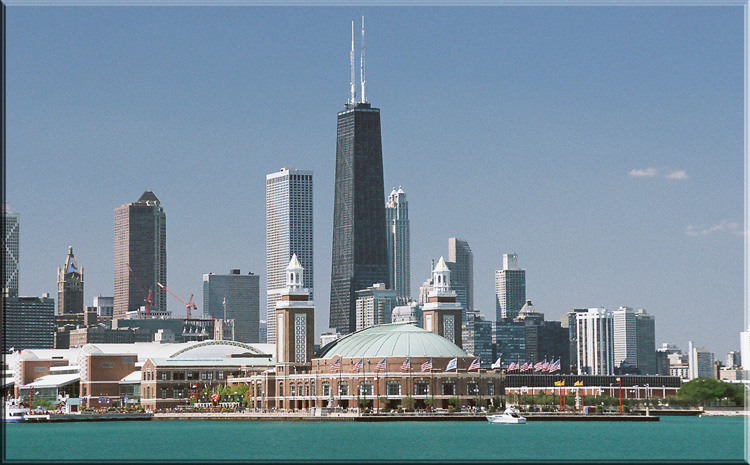By: Chris Warren.
Last summer during a vacation trip to Chicago, I accepted an invitation to go on an architecture bus tour. For those who don’t know, Chicago is where the skyscraper was born and more than any other locale in the world is the earliest example of the modern city. Our tour lasted two hours, but that was barely an introduction. There are people who spend their entire careers studying the architecture of Chicago and still do not get through it all.
On the long drive home, my brief education in architecture opened my eyes to something that I had not noticed before: Out in the suburbs, the buildings along the highway, almost all of which were built since the 1980s, were boring boxes of recycled design.
There were very few structures that looked like some thought was put into them. The rest were pre-formed concrete, glass hanging on steel, or some combination of the two. Like a little kid sticking toy Lego blocks together, the designers of these buildings did not select construction materials to fulfill a vision, they altered their vision to fit the construction material.
Nearly all the architecture on the Chicago tour was at least thirty years old; many were eighty or more years old. And there were dozens of them. Block after city block of creativity and visual art. It was amazing and beautiful. The suburbs were mile after boring mile of thoughtless edifices that looked as if sometime in the 1980s they just quit designing buildings and lazily resorted to stacking giant Legos together under the guise of “architecture”.
I’m confidant that every American male who was born in the last fifty years, including me, played with Legos as a kid. The low-tech, simple, snap together plastic blocks are a timeless classic that never loses its appeal even in the age of iPads and high definition video games. They are a lot of fun but do not allow for much originality. Give ten kids ten matching sets of Legos and let them each make something. The results will be very similar across the group: Boxy things with a lot of right angles that do not vary much from one example to another. The physical and geometric limitations of Legos controls the creativity, not the other way around.
I bet I could drive through the suburbs of New York or Seattle or Phoenix and it would not seem much different from the Chicago suburbs. I’m not the only one who notices a glaring dearth of creativity. People who know a lot more about this stuff than me are publicly grumbling. When you see the Empire State Building or the John Hancock Center, or even ancient Greek and Roman structures, you’re looking at architecture that does not look like anything else, any where.

If they could do such beautiful architecture in the past without the benefit of computer aided design, why can’t or won’t they do it now? Why does every building built in the last thirty years look like it came from the same box of Legos? Part of the answer may be economic or time considerations. Architects and designers are spending other peoples’ money, and those other people are (somewhat understandably) more concerned with budgets and deadlines than making an artistic statement.
I can’t envision anyone going on an architecture bus tour seven decades from now and marveling at pre-formed concrete buildings, assuming any of these buildings are still around. How did we go from gorgeous iconic edifices that will be admired for generations to assemblies of indistinguishable, glorified Lego blocks? If a civilization is remembered by the buildings it builds, then then we are living in a time that will be forgotten.
